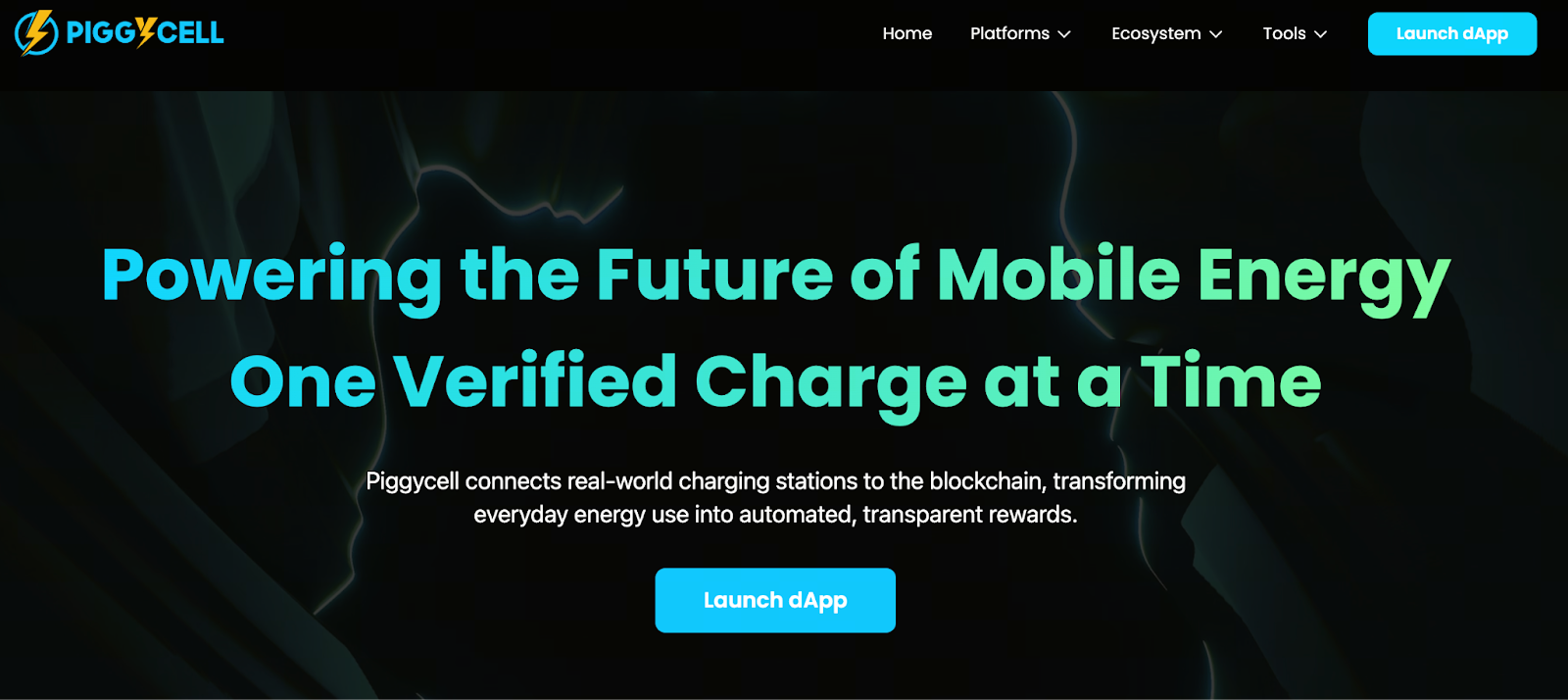Piggycell Project Analysis: The New Blue Ocean of “Charging Miners” Combining Physical Power Banks and DePIN
Project Background: Why Power Banks + Web3?

Image: https://www.piggycell.io/home
As mobile devices become increasingly reliant on power services in everyday life, South Korea has developed a mature shared power bank network. Piggycell (token: $PIGGY) is built around this real-world scenario, integrating the physical power bank and charging station business with the Web3 infrastructure model—DePIN (Decentralized Physical Infrastructure Network) and RWA (Real-World Asset). For example, Piggycell has deployed over 13,000 charging stations and more than 100,000 power bank devices in South Korea, serving millions of users. By bringing these devices on-chain to record rental, return, and charging activities as verifiable data, Piggycell leverages blockchain mechanisms to distribute rewards, transforming “power usage + rental” into a participatory and rewarding Web3 application.
Core Model Analysis: Charge-to-Earn and Dominate-to-Earn
Piggycell’s business model features two main tracks:
- Charge-to-Earn: Users rent or return power banks within the network, with their actions recorded on-chain. Users receive tokens or incentives as rewards.
- Dominate-to-Earn: Infrastructure contributors or NFT holders can own digital assets (such as NFTs) tied to specific regions or devices, earning dividends based on the charging or rental revenue those assets generate. This approach allows both regular users and device owners or deployers to share in the revenue, incentivizing network expansion, device onboarding, and increased usage frequency.
Latest Developments and Price Trends
- Latest news: Piggycell announced it will launch on the Binance Alpha platform on October 28, accompanied by an airdrop event.
- Price and issuance status: Currently, key data such as price and circulating supply are not yet fully transparent on major data platforms.
- Market research indicates the project has secured investment from leading firms including DWF Labs and Animoca Brands, and maintains a leading position in the South Korean market.
In summary, the project is in the “pre-launch and expansion” phase, with strong breakout potential but not yet fully priced by the market.
Key Advantages and Potential Opportunities
- Physical business meets Web3: Unlike purely blockchain-based projects, Piggycell operates a real-world device network, user base, and cash flow.
- First-mover advantage: Piggycell commands a significant share of South Korea’s shared power bank market, benefiting from network effects.
- Innovative approach: By combining the high-frequency, everyday act of charging with “use-to-earn” and “device-as-asset” models, Piggycell offers an engaging, low-barrier experience ideal for new users.
- Expansion potential: With the DePIN model, this approach can be replicated in other countries or infrastructure sectors (such as charging stations or WiFi hotspots), offering considerable growth opportunities.
Risk Warnings and Tips for New Users
- Regulatory risk: On-chain physical assets, NFT dividends, and revenue distribution may face legal uncertainties in different jurisdictions.
- Secondary market liquidity: Before or shortly after launch, token circulation may be low, posing risks to trading depth and liquidity.
- Competitive imitation risk: If other projects replicate the model, Piggycell’s first-mover advantage could be diluted.
- Advice for new users: Start by understanding device deployment, market share, and product usage. Manage your risk carefully and avoid committing all your funds.
Summary
In summary, Piggycell is an innovative project that combines physical infrastructure (shared power banks) with Web3 mechanisms (DePIN, RWA, Token/NFT). For those new to Web3 who want to participate through “use-to-earn” and on-chain physical assets, this model is highly appealing. However, the project remains in its early stages, and significant market volatility and uncertainty are expected before and after launch. If you’re interested in the intersection of power banks, the sharing economy, and blockchain, Piggycell deserves a spot on your watchlist—but always participate with caution.
Related Articles

2025 BTC Price Prediction: BTC Trend Forecast Based on Technical and Macroeconomic Data

Flare Crypto Explained: What Is Flare Network and Why It Matters in 2025

Pi Coin Transaction Guide: How to Transfer to Gate.com

How to Use a Crypto Whale Tracker: Top Tool Recommendation for 2025 to Follow Whale Moves

What is N2: An AI-Driven Layer 2 Solution
